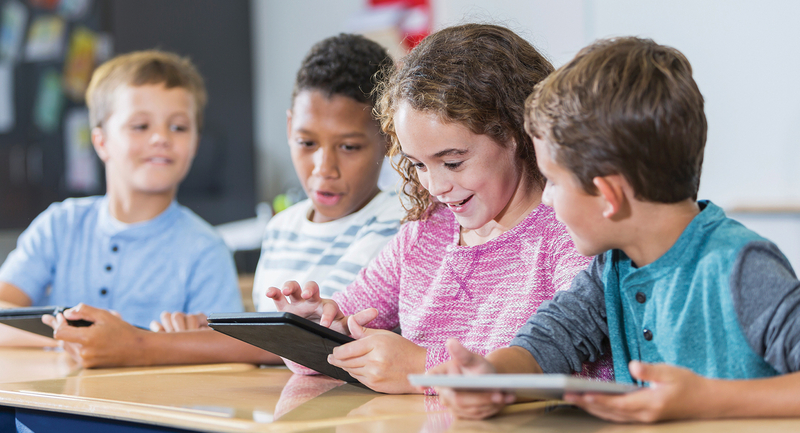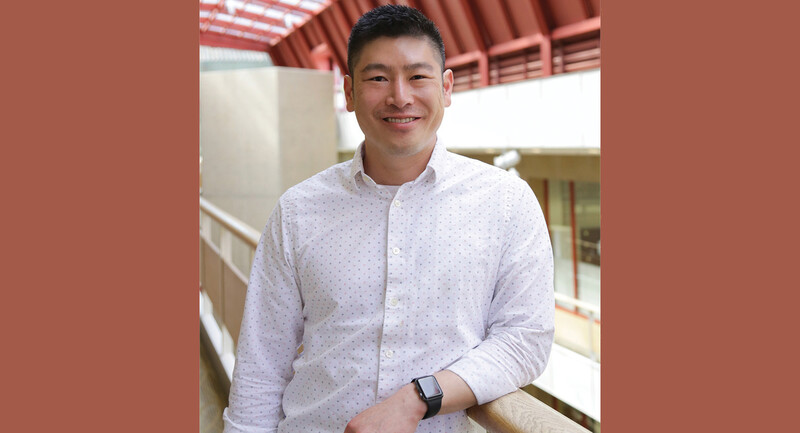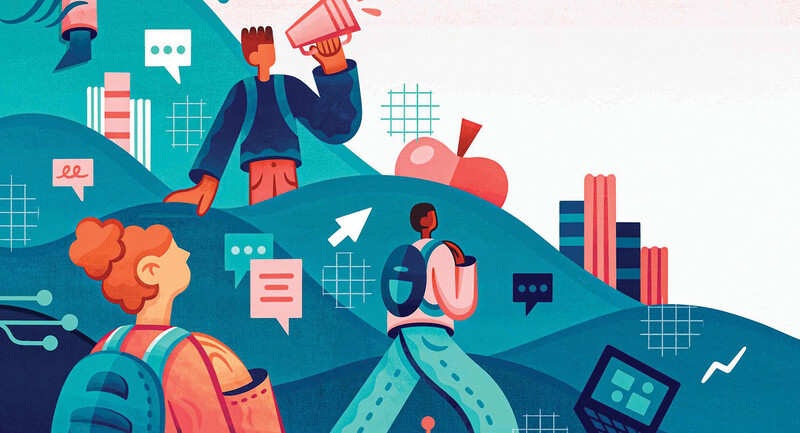Siddharth Mandala was just 12 years old in 2012 when the brutal rape of a woman in Delhi, India, by six men on a transit bus made international headlines. At 15, he set about to "create something that could stop people from becoming victims of rape" (Mandala, 2017).
His invention, which he called the ElectroShoe, is a type of footwear that with one kick can instantly deliver a powerful electric shock to a perpetrator and simultaneously send an alert to police and family members. Siddharth created a circuit board within the shoes that uses the owner's footsteps to charge itself; as the user walks, it generates energy that is then stored in a rechargeable battery.
"The invention process was an uphill climb as I ran into countless problems," Mandala wrote. He had to teach himself programming. His prototype failed 17 times. He was nearly electrocuted—twice. When it finally worked, he said he felt like a superhero.
As with many entrepreneur stories, it's not so much the product that's interesting, but the journey behind the creation of it. In this case, that journey is a model for how our students are making and learning in the modern world.
A Whole New World
Siddharth's invention would not have been possible without the freedom to pursue a solution to a problem that deeply mattered to him.
That creative freedom, or "agency," is a key aspect of almost every deep learning experience that we have in life. Our ability to decide on our own terms what, when, and how to learn leads to learning that "sticks" far more than when we are given little or no choice. And when that agency is amplified by the integration of modern technologies, we have a potent mix for solving real problems in the world, benefiting real people in powerful ways.
That mix is rarely as potent as it can be in most school settings, however. Access to technology is no longer the issue—nearly every child in the United States has Internet access at school today, and most are provided with tablets, laptops, or smartphones (Herrold, 2017). Instead, the question is about what we are encouraging kids to do with those devices. Do we fully understand the importance of agency and technology in a learning context both inside and outside the school walls?
Siddharth Mandala is just one example of a student who had the freedom to pursue a passion that helped him learn and improve the world. Many others are going above and beyond their school learning:
Anna Salvatore, a 16-year-old from Pennington, New Jersey, created the High School SCOTUS blog, which keeps tabs on the latest court cases, and, among other things, publishes interviews with judges at various levels of the system. She now has four other student collaborators from around the country. As a high school sophomore, Aaron Westbrook designed and printed a 3-D prosthetic arm to replace his own forearm, which was missing from birth, and then, for his senior project, created another for a seven-year-old girl.
13-year-old Emma Yang developed a mobile app called Timeless that allows Alzheimer's patients to recognize people through automatic artificial intelligence-based facial recognition technology, an idea sparked by her grandmother's struggle to remember names.
These students pursued their own passions outside of the school day and curriculum in ways that led to powerful, important learning—and significant contributions to the world. And they are also examples of the power of technology when used in the service of projects that are self-determined, ones that matter to the learner.
Adding Agency to the Classroom
In many circles, the phrase "voice and choice" has become a popular term for creating options for student learners. Voice and choice advocates say they want more freedom for students to select a path to a particular learning outcome. However, this often does not include allowing them to select their own outcomes in the first place.
That's a crucial distinction, because true agency is the freedom to choose what to learn as well as how to learn it. Curriculum matters, but only to the extent that it is used to support a student's inquiry. In neglecting this aspect of independent learning, many schools are missing the opportunity to give students true agency over their learning. Author and educator Sean Michael Morris (2017) offers a compelling description of agency in a school context:
Agency does not give us power over another, but it gives us mastery over ourselves. And an education that does not encourage or facilitate this agency is not an education. An education that convinces us of what needs to be known, what is important versus what is frivolous, is not an education. It's training at best, conscription at worst. And all it prepares us to do is to believe what we're told.
Obviously, that's a characterization of agency that challenges the systems and structures of most schools today. But it's arguable that for students to thrive in an increasingly complex and uncertain future, Morris's version of agency is closer to what classrooms should aspire to in the modern world. In a world that increasingly privileges a person's ability to learn over her ability to carry knowledge around in her head, creating the conditions for agency in classrooms is a requirement, not an add on.
Our students know this. At a moment when some surveys show that only about a third of high school juniors are engaged in school (Busteed, 2013), students are increasingly pushing back against the highly regulated systems and structures of school that constrain agency. They feel increasingly disassociated from the ways in which they learn outside of school.
Sam Levin was one of those dissatisfied students. In 2012, as a high school senior, he founded The Independent Project, a school within the Monument Mountain Regional High School in Barrington, Massachusetts, that focused on student-driven learning. Through this experiment, Levin wanted students to be able to pursue learning on their own terms. He sees student agency as an absolute, especially as the problems we face as a global society, such as climate change and large shifts in economic and political systems, become more complex. Students at The Independent Project used technology to create videos and podcasts around passion projects, which they then shared on the Web (Tsai, 2013).
In an article in The Washington Post, Levin says:
People talk about giving students a voice. A seat at the table. If we're going to solve these problems, we're going to need more than that. … Give them real agency in their own education. … Let them learn things that have real meaning to them. Make them the authors of their curriculum (Strauss, 2014).
Making students true authors of their own curriculum has never been easier, given our advances in technology. In Invent to Learn, authors Sylvia Martinez and Gary Stager (2013) write that there are three primary affordances from modern technologies that can be applied to the classroom. First, with fabricators and 3-D printers, we can make real things when we need them for unique purposes that no one else may ever share. Second, we can use small, simple circuit boards and electronics to do physical computing, such as connecting devices to the Internet or creating robots, games, and home appliances. And finally, programming has become mainstream, which, according to Martinez and Stager, may be the most important development of all when it comes to understanding the world around us.
In a blog post, Stager writes:
The act of computing gives children agency over an increasingly complex and technologically sophisticated world. When every child owns a personal portable computer, they are able to construct knowledge "anytime anywhere,' learn-by-doing, and share their knowledge with a global audience. Computing bestows agency upon learners and allows them to embrace complexity while exploring domains of knowledge and demonstrating ways of knowing unavailable to adults just a few years ago (Stager, 2017).
In other words, this moment is increasingly about expanding the opportunities for students to get outside both the curricular and classroom boxes most schools currently put them in.
Agency and Technology in Classrooms
So, how can schools tap into students' creativity and ambition to help them take control of their own learning? What does the combination of transformative new technologies and student agency look like in schools? The answers to these questions are already taking shape in some schools.
In a conversation during a leadership workshop last fall, Vice Principal David Truss of Inquiry Hub, an innovative secondary school in the Coquitlam School District, British Columbia, told me that his students spend about half their time working on projects that they initiate, design, and share with the world. One such project, VoteMate.org, is the brainchild of senior Laef Kucheran, whose interest in politics led him to create an easy way for voters to compare candidates in their local elections. On his site, candidates can upload information on their views and platforms, share contact information, and even chat with potential voters. This year, Kucheran plans to use the site to support the provincial and federal elections in Canada as well. My colleagues at Mount Vernon Presbyterian School outside of Atlanta are helping students use the latest in virtual reality technology to try to change the face of pediatric rehabilitation in a local hospital, among other things. Students visited rehab centers to get a sense of what projects might improve a child's experience there. In one instance, students developed a virtual reality game that the young patients could play while exercising.
"We created our VR Lab to do good things in the world, and our students have the freedom to figure out what that means in terms of their own interests," says teacher Marie Graham, the director of the lab.
And finally, in Christina Classen's classroom in Colorado Springs District 11, students select a problem or a cause that they see as important and work to solve it or raise awareness. Christina, who is an alumna of the master class program, Change School, that I run, has given her students agency to learn about immigration, teen suicide and depression, local laws governing pit bulls, and police brutality.
"When kids have a say in what they learn about and can exercise that agency around how to do it as well, they are way more invested and they are much more passionate and driven about getting the work done," Classen says. "And the technologies they use to do research, to interview people, and to produce end products are what take the projects to a much higher level."
Making Room for Agency
It is not easy to move toward a classroom environment that is built on the combination of giving students the freedom to pursue topics that matter to them and providing the technologies they need to create meaningful, beautiful, and important work in the world. We aren't used to students having that much freedom. And to be honest, we're also not used to putting the true potentials of technology in the hands of children. Both challenge the cultures and the roles of teachers that are prevalent in most schools.
Traditional systems and structures were built for a type of classroom experience that is teacher-controlled and mediated by a very narrow vision for the use of technology. Despite the growing ubiquity of devices, giving students the freedom to use those devices for learning of their own design is complex on many levels, not the least of which are ensuring safety and appropriate use. A shift in practice requires a great deal of time to build norms and trust, as well as to create a very different, coherent vision around what learning is and how it can happen in classrooms.
The first step in moving toward more student agency in general is for leaders, teachers, and parents to acknowledge and articulate the fact that learning only occurs at depth when the learner has choice. That we don't base more of our practice on that reality leads to much of the dissonance kids and teachers are experiencing in schools today. But such a shared vision requires extensive, and in some cases uncomfortable, conversations that require months—if not years—of intentional planning.
Second, we need to create conditions in schools that give students more space to roam when it comes to learning. The trend toward Genius Hour and maker spaces is an encouraging start, but true agency that leads to deep learning requires that we move beyond providing just an hour or a space. It requires reimagining the classroom. It also requires reimagining the role of the teacher to become more of an expert on learning than an expert on any particular subject. On an eye-opening visit last summer to the Haeata Community Campus in Christchurch, New Zealand, I saw K–12 students working almost full-time on self-determined projects, meeting when necessary in small groups with teachers who served more as mentors and coaches than as instructors.
Finally, we need to engage in some important conversations about assessment as it applies to student-determined projects. Without question, for example, helping students learn how to self-assess will develop a much-needed skill that will serve them throughout their lives.
Every day, all around us, kids are using modern technologies to follow their passions and to share the amazing results of those pursuits with global audiences. The more we can bring those learning experiences inside of school and help students do even more important work with us than they can do on their own, the more prepared they'll be for a fast changing, increasingly uncertain world.
Guiding Questions
› Do you agree with Richardson that "true agency is the freedom to choose what to learn as well as how to learn it"? Why or why not?
› Why is technology so crucial to student agency? Why aren't more schools embracing the potential of the two?
› Think of a time you've used technology in the classroom to enhance student learning. Could you have done something differently to give students more control over what and how they learned?









